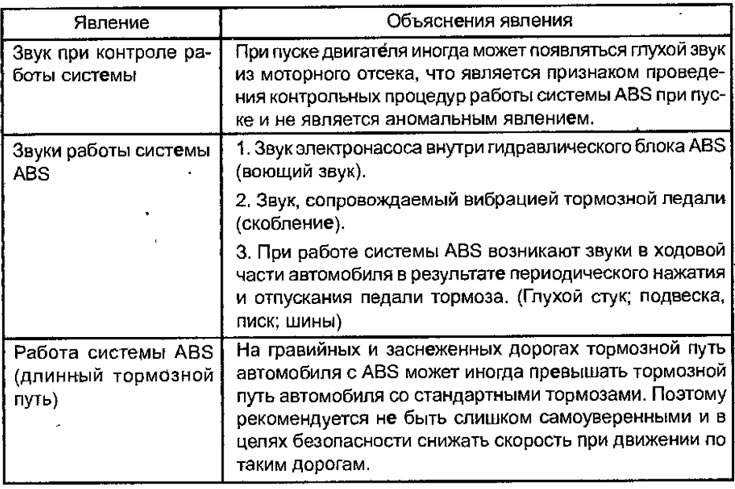Braking is carried out with the greatest efficiency with maximum tire adhesion to the road surface. When braking, the tire slides over the surface and the circumferential speed of the wheel becomes less than the speed of the car.
Minimum slip when the wheel rolls freely and maximum when the wheel is locked. The greatest efficiency of braking is achieved when the circumferential speed of the wheel is almost equal to the speed of the vehicle.
The electronic unit has a self-diagnostic function, which, when a malfunction is detected, turns on the ABS warning lamp. Faults are stored in memory and can be recalled using the MUT-tl.
Notes on ABS diagnostics.
The sounds and phenomena that appear during the check and operation of the elements of the brake system, however, are not abnormal, are shown in the table.
Malfunction detection conditions may vary depending on the malfunction code.
A table of sounds and phenomena that appear when checking and operating elements of the brake system, but are not abnormal.

